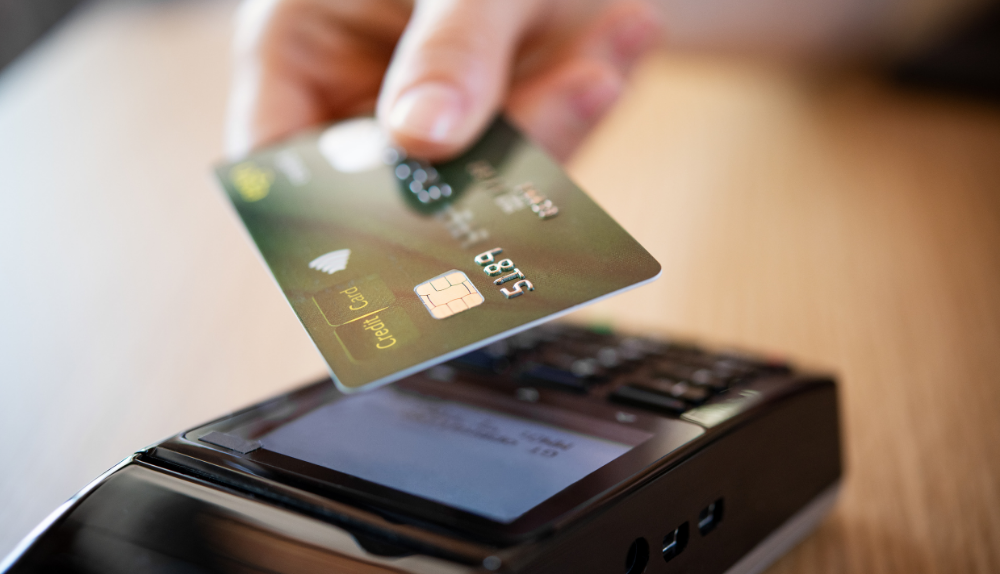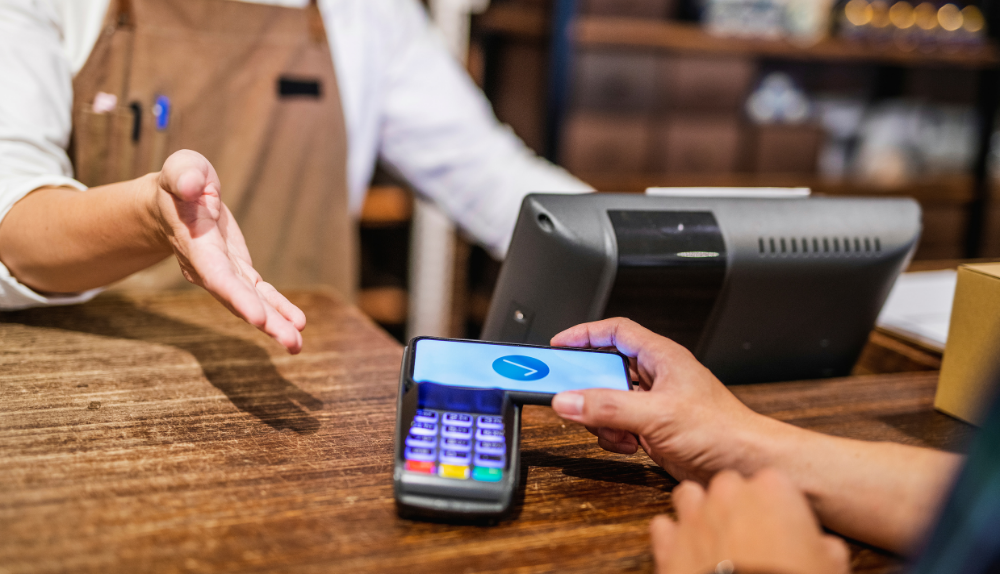In the world of business, there’s a special code called the Merchant ID, or MID for short. It helps businesses handle payments and interact with customers smoothly. As a business owner, you may have come across this code while setting up your payment account. Don’t worry; we’ll explain what it is and how to get one easily. Understanding the Merchant ID will make your financial transactions much easier, and your customers will be happier too. Let’s explore what the Merchant ID is all about and how to get it quickly, so you can feel confident in managing your business payments.
What is a Merchant ID?
A Merchant ID (MID) is a unique identification code assigned to businesses by their credit card processor when they set up a merchant account to accept payments. It serves as a critical link between a business and the payment processing network. Think of it as a digital passport that allows businesses to securely process credit card transactions. When a customer makes a purchase using a credit card, the MID acts as a marker to identify the specific business receiving the payment. This helps ensure that the funds from the sale are routed accurately to the correct merchant account.

The Merchant ID is vital for maintaining transaction records, handling refunds, and resolving any payment-related issues. Each business receives a distinct MID, enabling them to distinguish themselves within the vast ecosystem of electronic payments. Ultimately, the Merchant ID streamlines the payment process, safeguarding against errors and promoting a seamless and efficient exchange of goods and services.
How to Get a Merchant ID?
Obtaining a Merchant ID (MID) is a crucial step for businesses looking to accept credit card payments. Below are the steps to acquire a Merchant ID:

Choose a Payment Processor
Start by selecting a reputable payment processor or acquiring bank that suits your business needs. Look for factors such as transaction fees, security features, and customer support.
Complete the Application
Once you’ve chosen a payment processor, you’ll need to fill out an application to open a merchant account. The application will require information about your business, such as its legal structure, industry type, and estimated transaction volume.
Provide Required Documentation
The payment processor may request specific documents to verify your business’s legitimacy and financial stability. Common documents include government-issued identification, business licenses, bank statements, and voided checks.
Undergo Underwriting and Approval
The payment processor will review your application and documentation through a process called underwriting. They will assess factors like your credit history, industry risk, and compliance with payment regulations.
Setup and Integration
Once approved, the payment processor will set up your merchant account and provide you with a unique Merchant ID. They will also guide you through the integration process, enabling your business to accept credit card payments through various channels, such as online, in-store, or mobile.
Test Transactions
Before going live, conduct a few test transactions to ensure everything is functioning correctly. Double-check that the transactions are being credited to your merchant account accurately.
Go Live and Start Accepting Payments
Once everything is in place, you’re ready to go live and begin accepting credit card payments using your newly acquired Merchant ID. Congratulations! Your business is now equipped to offer customers convenient payment options and facilitate smoother transactions.
Remember, every payment processor may have slightly different procedures, so it’s essential to follow their specific guidelines and contact their support team if you encounter any challenges along the way. With your Merchant ID secured, you can now focus on growing your business and serving your customers with ease.
How to Protect Your Merchant ID from Getting Revoked?
Protecting your Merchant ID from getting revoked is crucial for maintaining uninterrupted payment processing capabilities. Here are some essential measures to safeguard your Merchant ID:
Compliance with Payment Regulations
Stay informed about the latest payment industry regulations and ensure your business adheres to them. Non-compliance can lead to severe consequences, including the revocation of your Merchant ID.
Secure Payment Environment
Implement robust security measures to protect customer data and payment information. Utilize encryption technology, secure sockets layer (SSL) certificates, and maintain PCI DSS compliance.
Monitor Suspicious Activities
Regularly monitor your payment transactions for any unusual or suspicious activities. Be vigilant for potential signs of fraud or unauthorized access to your payment systems.
Update Software and Patches
Keep your software, payment gateway, and other payment-related applications up-to-date with the latest security patches. Regularly update your systems to defend against emerging threats.
Train Your Staff
Educate your employees about security best practices, phishing scams, and social engineering tactics. A well-informed team is better equipped to protect sensitive information.
Use Multi-Factor Authentication (MFA)
Implement multi-factor authentication for access to critical payment systems. This adds an extra layer of security beyond traditional passwords.
Limit Access and Privileges
Restrict access to sensitive payment data and grant privileges only to authorized personnel. Regularly review and update access permissions as needed.
Maintain Strong Passwords
Enforce the use of strong passwords for all accounts related to payment processing. Avoid using default or easily guessable passwords.
Regular Security Audits
Conduct regular security audits to find vulnerabilities and quickly fix them. Engage outside specialists to evaluate the security of your payment infrastructure.
Backup and Disaster Recovery
Regularly back up your payment data and have a disaster recovery plan in place. This helps protect against data loss due to unforeseen events like cyberattacks or system failures.
Partner with Reputable Service Providers
Choose reliable payment processors and service providers with a track record of secure and trustworthy operations.
By diligently implementing these protective measures, you can significantly reduce the risk of your Merchant ID getting revoked and maintain a safe and secure payment environment for your business and customers.
Benefits of the Merchant ID
Having a Merchant ID (MID) offers several benefits to businesses that accept credit card payments. Some of the key advantages include:

Payment Acceptance
With a Merchant ID, businesses can accept credit card payments, allowing customers to make purchases using their preferred payment method. This broadens the customer base and boosts sales opportunities.
Increased Sales and Revenue
Accepting credit cards can lead to increased impulse purchases and higher average transaction values, ultimately driving more revenue for the business.
Customer Convenience
Credit card payments provide customers with a convenient and seamless checkout experience, leading to higher customer satisfaction and loyalty.
Global Reach
With a Merchant ID, businesses can process payments from customers around the world, expanding their reach beyond local markets.
Faster Transactions
Credit card payments are processed electronically, resulting in quicker transaction times compared to cash or check payments.
Reduced Risk of Bad Debts
Credit card transactions are typically authorized in real-time, reducing the risk of non-payment and bad debts.
Enhanced Security
Many payment processors implement robust security measures to protect sensitive payment information, reducing the risk of fraud and data breaches.
Efficient Record-Keeping
Merchant IDs facilitate efficient record-keeping, as all payment transactions are tracked, making it easier to manage finances and reconcile accounts.
Recurring Billing and Subscriptions
Businesses with a Merchant ID can set up recurring billing or subscription services, providing a steady and predictable revenue stream.
Online Sales and E-commerce
Having a Merchant ID enables businesses to set up online stores and participate in e-commerce, tapping into the vast potential of the digital marketplace.
Integration with Point of Sale (POS) Systems
Businesses can integrate their Merchant ID with POS systems, streamlining in-store transactions and inventory management.
Access to Reporting and Analytics
Payment processors often provide reporting tools and analytics, allowing businesses to gain insights into sales trends and customer behavior.
Competitive Advantage
Accepting credit card payments can give businesses a competitive edge, as customers often prefer businesses that offer convenient payment options.
Credibility and Trust
Having a Merchant ID lends credibility and trustworthiness to a business, as it demonstrates a commitment to professional payment processing practices.
Other Types of Merchant IDs to Know About
In addition to the traditional Merchant ID (MID), there are other types of merchant identification numbers that businesses should be aware of:
- Processor-Specific IDs: Some payment processors issue their own unique identifiers to merchants, which are used within their network for transaction processing and reporting.
- Terminal Identification Number (TID): This ID is assigned to specific payment terminals or devices used by merchants to process card transactions.
- Merchant Category Code (MCC): An industry-specific code assigned to merchants by payment networks, which helps categorize businesses for reporting and compliance purposes.
- Acquirer Reference Number (ARN): A unique code provided by the acquiring bank that tracks specific credit card transactions.
Understanding these various merchant IDs is essential for efficient payment processing, accurate record-keeping, and compliance with payment industry standards.
Final Words
In conclusion, understanding the significance of a Merchant ID (MID) is vital for businesses seeking to streamline payment processing and enhance customer interactions. Obtaining a Merchant ID involves selecting a suitable payment processor, providing the required documentation, and undergoing underwriting for approval. Protecting this valuable identifier from revocation entails maintaining compliance with payment regulations, implementing robust security measures, and ensuring staff awareness of best practices.
Alongside the Merchant ID, other identification numbers, such as TIN, EIN, and BIN, play crucial roles in financial and legal transactions. By familiarizing themselves with these IDs and their respective applications, businesses can confidently navigate the intricacies of the digital age, bolster sales opportunities, and foster enduring trust with their customers.
Frequently Asked Questions (FAQs)
How do I obtain a Merchant ID?
To get a Merchant ID, you need to apply for a merchant account with a payment processor or acquiring bank. Complete the application, provide the required documentation, and undergo underwriting for approval.
What is the difference between a Merchant ID and a Processor-Specific ID?
While a Merchant ID is a unique identifier issued to businesses for payment processing, a Processor-Specific ID is a unique code issued by certain payment processors for their network’s internal use.
Can I use the same Merchant ID for online and in-store transactions?
Yes, typically, a single Merchant ID can be used for both online and in-store transactions as long as they are processed through the same payment processor.
What is a Merchant Category Code (MCC)?
The Merchant Category Code (MCC) is a four-digit code assigned to merchants by payment networks, categorizing businesses based on their industry for reporting and compliance purposes.
How can I accept credit card payments without a Merchant ID?
Without a Merchant ID, you won’t be able to directly accept credit card payments. However, you can explore alternative payment methods like third-party payment gateways or payment aggregators that process payments on your behalf.
